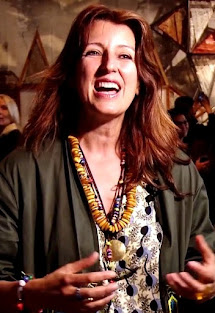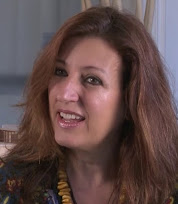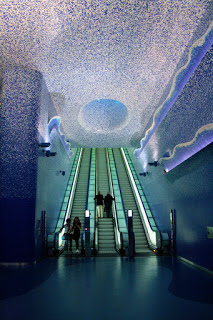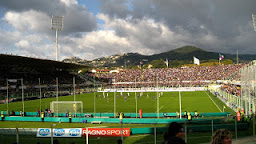Italian half of an acclaimed design partnership
 |
| Benedetta Tagliabue is an award-winning architect based in Barcelona, Spain |
Tagliabue formed a close friendship with Barcelona-born Miralles when she was a student and he was teaching at Columbia University in New York.
They became business partners in 1991 and married a year later. Tragically, Miralles died in 2000 at the age of just 45, having been diagnosed with a brain tumour, but Tagliabue has continued to run the business they created.
Tagliabue studied architecture in Switzerland and Venice, attending the Istituto di Architettura di Venezia (IUAV), which is part of the University of Venice. She fell in love with the city of canals and made it her home for several years. Indeed, she first met Miralles in Venice when she interviewed him for a magazine.
They were reacquainted when she went to New York for the final thesis of her degree and stayed in touch. They began a formal collaboration in 1991 and founded the architecture firm Miralles Tagliabue EMBT.
Based in Barcelona, the company undertook projects in Barcelona as well as The Netherlands and Germany.
They began work on the Scottish Parliament project in 1998. Miralles was familiar with the Scottish capital and had studied the Edinburgh architect William Adam.
 |
| The Scottish Parliament building at Holyrood in Edinburgh was instigated by Enric Miralles and completed in 2004 |
Not long afterwards Miralles became ill and underwent surgery in the United States following his diagnosis. The operation was hailed a success but, after returning home to Barcelona, Miralles suffered a fatal blood clot.
Despite her loss and being left to bring up two children without a partner, Tagliabue vowed to complete the projects that she and her husband had begun, including the Scottish Parliament Building, which was completed in 2004.
These included the Diagonal Mar Park and the Santa Caterina Market in Barcelona and the University Campus in Vigo. The Santa Caterina Market features a striking roof in the shape of what has been described as a multicolored ceramic wave.
 |
| Tagliabue has designed a metro station in Naples |
Her projects in Italy include the development of redundant former railway sidings in Milan and a metro station in the Centro Direzionale business district in the Poggioreale area of Naples.
Tagliabue, who has been a visiting professor at Harvard University, Columbia University and the Barcelona School of Architecture, lives in Barcelona in the Ciutat Vella quarter, the oldest part of the city, which has been likened to Naples but which Tagliabue said reminds her of Venice.
Founded in 1926, Venice’s renowned School of Architecture began life as the Istituto di Architettura di Venezia (IUAV). Nowadays it is known as Iuav University of Venice, or simply Iuav. It is the only university in Italy to provide thorough education and training in architecture, urban planning, design, visual arts, theatre and fashion. The headquarters of Iuav can be found in the Santa Croce sestiere in Calle dei Amai, not far from Piazzale Roma and the Santa Lucia railway station. Other departments are housed in the Palazzo Badoer in Calle de la Laca, while the Palazzo Ca’ Tron on the Grand Canal near the church of San Stae is used as an exhibition centre. The campus also includes the cotonoficio veneziana, a former cotton mill on the Giudecca Canal that dates back to 1883 and was restored in the 1960s after lying empty for more than 30 years.
The metro station EMBT are creating in Naples is the latest of several stations on the city’s network in which the emphasis has been on turning the underground rail system into a thing of beauty as well as functionality. The most famous of these is Toledo, on the edge of the city’s Spanish Quarter, which features a breathtaking escalator descent through a vast mosaic by the Spanish architect Oscar Tusquets Blanca known as the Crater de Luz – the crater of light – which creates the impression of daylight streaming into a volcanic crater.
Also on this day:









